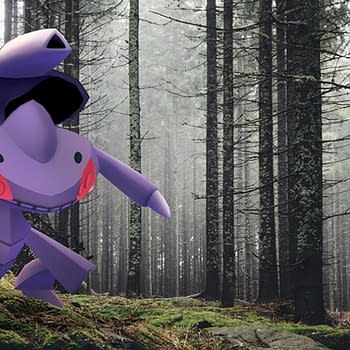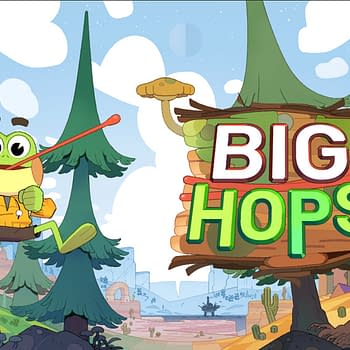Posted in: Games, Mobile Games, Niantic, Pokémon GO | Tagged: giratina, Niantic, Niantic Labs, pokemon, pokemon go
Everything Pokémon GO Players Need To Know About Giratina Origin
Part of the fun of the main series Pokémon games is the lore of these Legendary Pokémon, which Pokémon GO recreates with short descriptions in their Pokédex entries. However, looking into the roles these Pokémon play in other games, and even the anime, can enrich the experience of raiding these creatures in Niantic's mobile game. In honor of Giratina Origin Forme's Shiny release in Legendary raids, let's take a deep dive into this Renegade Pokémon's lore before it leaves raids this Friday.

Dex entry number 487, Giratina is a dual Ghost/Dragon-type species from the Sinnoh Region, introduced into the world of Pokémon with Generation Four. This Legendary Pokémon, like most, has no gender. Referred to as the "Renegade Pokémon," this is what Giratina's Dex entry says:
It was banished for its violence. It silently gazed upon the old world from the Distortion World.
In the original game series, this Renegard Pokémon can be encountered on Turnback Cave in the Sinnoh Region. Originally, Giratina was only released in its Altered Forme. Its Origin Forme, the snake-like beast seen above, was released in Pokémon Platinum, an enhanced version of the original Pokémon Diamond and Pearl that came two years after the Altered Forme debut. The Altered Forme is meant to show the way that Giratina appears in the regular world. This Forme features higher defense. The Origin Forme, which is currently in raids in Pokémon GO, is how Giratina appears in the Distortion World. This Forme features higher attack.
For fans of the anime, Giratina appears in two of the films: Giratina and the Sky Warrior and Arceus and the Jewel of Life. It is featured in the main series episode Hoopa and the Clash of Ages.
Another Pokédex entry offers new information about Giratina than what is known from Pokémon GO:
- Diamond/Pearl: A Pokémon that is said to live in a world on the reverse side of ours. It appears in an ancient cemetery.











